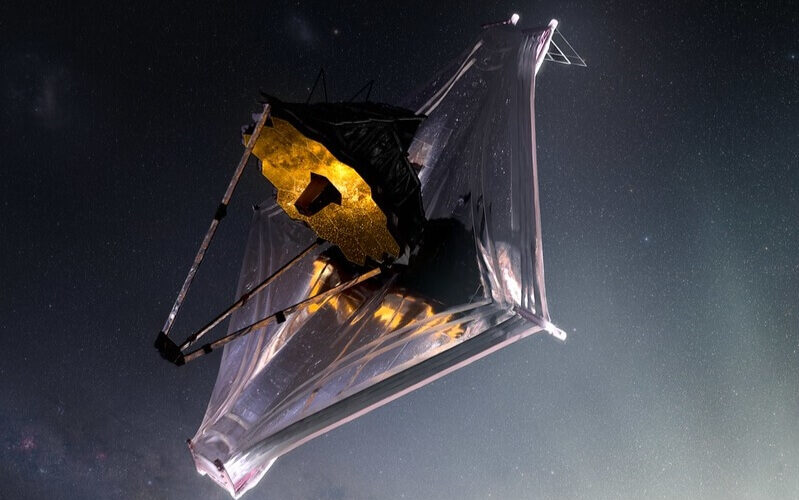The James Webb Space Telescope has been hit by a micrometeoroid, NASA has revealed, as the world awaits images from the telescope.
The world’s most powerful space telescope was launched in December and arrived at its final destination nearly 1 million miles (1.6 million kilometers) away from Earth on January 24, 2022. Since then, scientists on Earth have been carrying out preparations to enable the first images to be sent back.
However, at some point between May 23 and 25, the telescope “sustained an impact to one of its primary mirror segments”, NASA said in a blog post on June 8, 2022. While tests had been carried out on Earth to make sure the mirror could withstand bombardment of high-speed dust-sized particles found in the micrometeoroid environment at its orbit around the sun, this impact was larger than engineers had modeled and beyond what could be tested on the ground.
Flight teams can also carry out maneuvers to turn the optics away from known meteor showers, but NASA said this impact was not the result of a meteor shower.
“We always knew that Webb would have to weather the space environment, which includes harsh ultraviolet light and charged particles from the Sun, cosmic rays from exotic sources in the galaxy, and occasional strikes by micrometeoroids within our solar system,” said Paul Geithner, technical deputy project manager at NASA’s Goddard Space Flight Center in Greenbelt, Maryland.
Geithner said Webb had already been struck by four micrometeoroids, but the latest was larger than its degradation predictions had assumed. A team has now been set up to look at ways to mitigate the effects of similar-sized hits.
In late May, Webb sustained a dust-sized micrometeroid impact to a primary mirror segment. Not to worry: Webb is still performing at a level that exceeds all mission requirements. Our first images will #UnfoldTheUniverse on July 12: https://t.co/9jp0uq7ytS pic.twitter.com/VKkSp16yrg
— NASA Webb Telescope (@NASAWebb) June 8, 2022
“We will use this flight data to update our analysis of performance over time and also develop operational approaches to assure we maximize the imaging performance of Webb to the best extent possible for many years to come,” Geithner said.
NASA said thorough analysis was ongoing but initial assessments were that the telescope is “still performing at a level that exceeds all mission requirements despite a marginally detectable effect in the data.”
NASA, which is working with Canadian and European counterparts CSA and ESA on Webb, has previously said that the first full-color images will be released on July 12, 2022.

